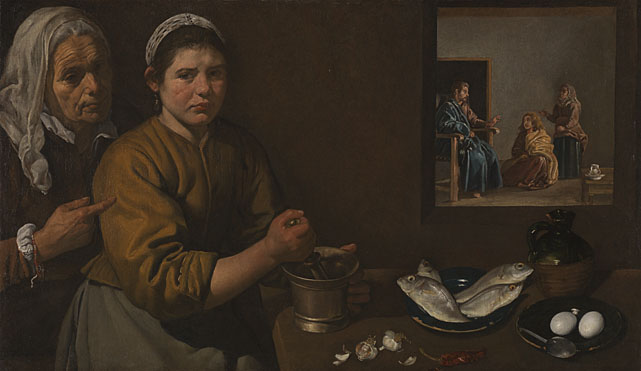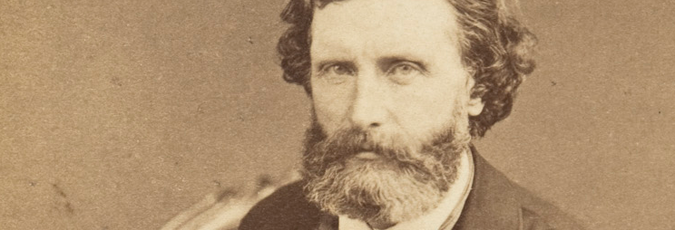Burton and his Trustees
The National Gallery Director was supported by a Board of Trustees – a structure that continues to this day. Burton’s two most active Trustees were Sir Austen Henry Layard (1817-1894) and Sir William H. Gregory (1816-1892). Both had served under the previous Director, Sir William Boxall. They stand out for their active participation and vocal opinions and their scholarly approach to art history.
Sir Austen Henry Layard

Austen Henry Layard trained as a lawyer but is best known for his excavations of the cities of the ancient Assyrian and Babylonian kingdoms mentioned in the Old Testament. He later became a Liberal Member of Parliament.
Layard had spoken in parliament and published on London’s art collections since the 1850s, recommending their reorganisation and re-display based on art-historical and chronological principles that he had admired in continental museums.
Layard and Gregory were both actively involved in the Arundel Society, which was set up to record Italian Renaissance frescos through illustrations and publications.
Layard had been considered for the post of Director in 1865, after the death of the Gallery’s first Director and Layard’s great friend, Sir Charles Eastlake, but instead became a Trustee.
Layard formed his private collection mainly from the late 1850s to the late 1860s often under the guidance of the art-historian Giovanni Morelli who introduced him to 16th-century northern Italian painting. Layard bequeathed his collection to the National Gallery. Layard also introduced Morelli to Burton and regarded him as an unofficial advisor and agent to the National Gallery.
Sir William H. Gregory
William H. Gregory was also a Member of Parliament, sitting firstly as a Conservative and later as a Liberal. Like Layard, he was heavily involved in the administration of London’s art collections. In 1860, he instigated and chaired the Select Committee on the British Museum, which discussed the arrangement of London’s art and archaeology collections more generally. Gregory was appointed a Trustee of the National Gallery in 1867. In 1872, he became Governor of Ceylon and established a museum there.
Gregory also acquired paintings for his personal collection, though not on the same scale as Layard. He had a particular interest in the Spanish School, having travelled in Spain and Portugal. It was here that he learned to appreciate ‘the unrivalled grandeur’ of Velázquez – later bequeathing Velázquez’s ‘Christ in the House of Martha and Mary’ to the Gallery along with several other pictures from his collection.
>
Conflict with Trustees
Burton sometimes faced internal conflicts with his Trustees who criticised him for his lack of decisiveness when it came to buying pictures, particularly, in Italy, through the agency of Giovanni Morelli. Burton may, however, have been sceptical as to Morelli’s advice, and correspondence shows that he had to navigate this relationship diplomatically. Furthermore, another of the Gallery’s advisors, the art historian and dealer Jean Paul Richter, double-crossed the Gallery by selling a picture (Palma Vecchio's ‘Blonde Woman’) that he had promised to the Gallery to rival collector, Ludwig Mond, at the last moment. However, the painting is now in the National Gallery collection.

